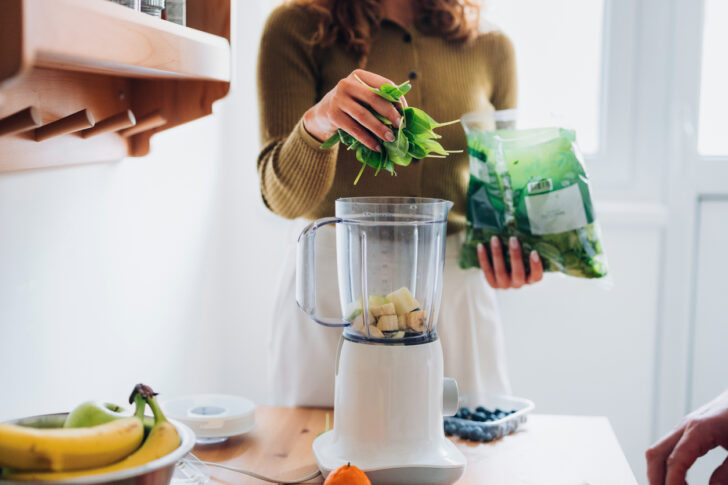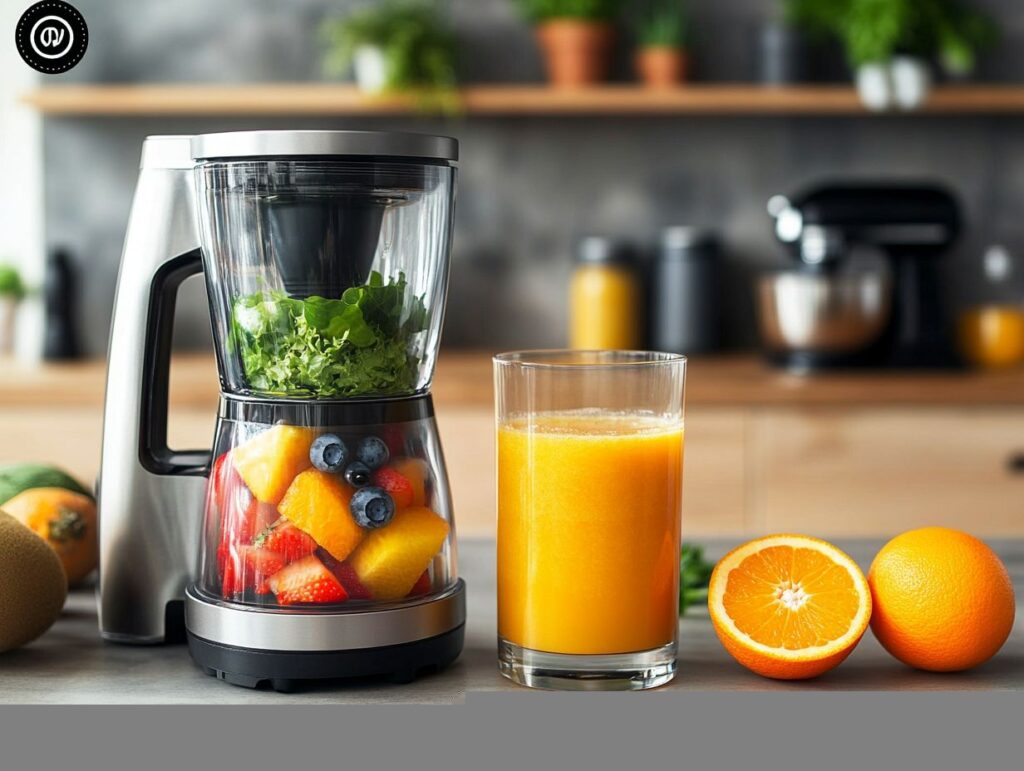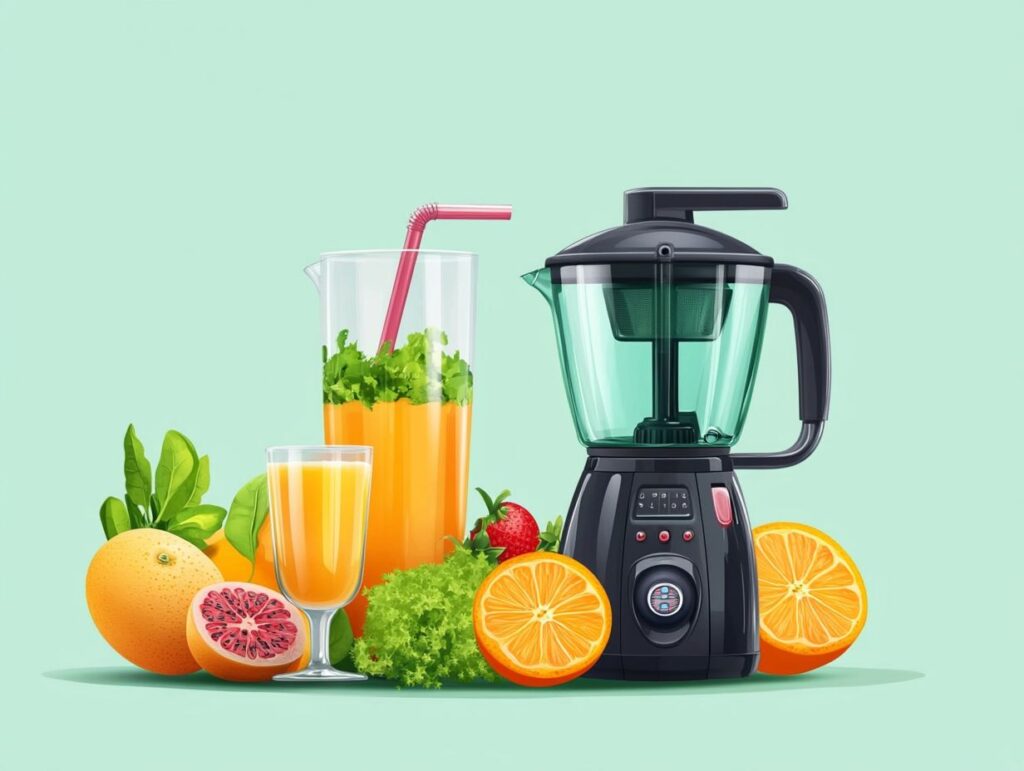
When considering the creation of delicious and healthy beverages at home, the decision between a blender and a juicer can present some confusion. Both appliances offer distinct functionalities and benefits, making them suitable for different culinary objectives. This article examines the key differences between blenders and juicers, focusing on their output and nutrient retention. Additionally, it provides an overview of the various types available, assisting you in determining which appliance best meets your needs. Whether your goal is to prepare smoothies or fresh juices, this guide will serve as a valuable resource.
Table of Contents
Key Takeaways:
- A blender is great for making smoothies, sauces, and soups, while a juicer is better for extracting pure juice from fruits and vegetables.
- Blenders retain more nutrients because they keep the fiber content in the drink, while juicers remove the fiber and some nutrients.
- Consider your dietary and lifestyle goals before deciding on a blender or juicer, and make sure to choose the type that best fits your needs.
What are Blenders and Juicers?
Blenders and juicers are essential kitchen appliances that serve distinct yet complementary functions for health-conscious individuals, emphasizing the maximization of fruit and vegetable intake. A blender is primarily designed for the preparation of smoothies, incorporating whole fruits and vegetables, while a juicer is utilized to extract fresh juice, typically discarding the pulp and plant solids.
Both appliances provide an efficient means of consuming nutrient-rich beverages; however, they cater to different dietary habits and preferences, making them valuable assets for anyone seeking to improve their health through better dietary choices.
A clear understanding of the functionalities of these appliances highlights their unique advantages. Blenders not only mix ingredients but also retain vital fibers and nutrients, rendering them ideal for creating nutritious smoothies that are rich in vitamins and minerals. Conversely, juicers deliver a concentrated form of juice, providing individuals with a quick and refreshing method to consume a wide variety of fruits and vegetables.
This distinction is particularly advantageous for those aiming to optimize nutrient absorption, as juicing can often result in a higher concentration of vitamins per serving. Furthermore, both blenders and juicers can be employed to create an array of recipes, accommodating diverse tastes and health objectives, thereby playing a crucial role in promoting overall wellness.
Blender vs. Juicer: Key Differences
Understanding the key differences between blenders and juicers is essential for individuals seeking to improve their kitchen experience and dietary practices.
While both appliances are intended for processing fruits and vegetables, they function through distinct mechanisms and produce different types of beverages, each offering its own unique nutritional benefits.
A blender operates by combining whole produce, thereby retaining fiber and nutrients, which facilitates quick absorption. In contrast, a juicer extracts the juice while often maximizing the vitamin and mineral content by discarding certain plant solids and pulp, resulting in a beverage that is nutrient-dense but low in fiber. This distinction in nutrient absorption is supported by insights from Scientific American, which explores how our bodies absorb nutrients from different food preparations, including juiced products (Scientific American).
Functionality and Output

The functionality and output of blenders and juicers differ significantly, leading to distinct results regarding texture, nutrient absorption, and overall health benefits.
Blenders employ high-speed blades to combine a variety of ingredients, resulting in smoothies that retain the dietary fiber and nutrients present in fruits and vegetables. This feature makes them particularly suitable for quick digestion and providing energy boosts.
In contrast, juicers are designed to separate juice from pulp and plant solids, producing a smooth, nutrient-rich liquid that is easily consumed. This concentrated form of vitamins and minerals is often preferred by health-conscious individuals.
Each appliance is tailored to accommodate different types of ingredients, thereby enhancing the culinary experiences they provide.
A blender is ideally suited for leafy greens, bananas, berries, and nuts, allowing for the creation of smoothies that are rich in fiber and healthy fats, which contribute to sustained energy levels and digestive health.
Conversely, juicers are particularly effective with harder produce, such as apples, carrots, and cucumbers, extracting their juices to yield a refreshing beverage abundant in antioxidants and hydration.
Combining ingredients, such as spinach with fruits in a smoothie or beets with citrus in juice, offers delicious methods to enhance dietary habits while maximizing the inherent health benefits provided by these vibrant products.
Nutrient Retention
Nutrient retention is a critical factor when comparing juicers and blenders, as each method of processing fruits and vegetables produces distinct nutritional profiles. Blenders preserve the entire produce, maintaining dietary fiber along with a comprehensive array of vitamins and minerals. Conversely, juicers focus on extracting the liquid, resulting in a more concentrated source of nutrients but with a notable reduction in fiber content. This distinction significantly influences the rate at which nutrients can be absorbed by the body and the overall health benefits associated with these kitchen appliances.
Comprehending the differences between fiber-rich smoothies and nutrient-dense juices is essential for making informed dietary choices. Smoothies, which are based on whole foods, provide substantial fiber that aids digestion, promotes satiety, and assists in regulating blood sugar levels. In contrast, the juicing process typically removes this beneficial fiber, making juices easier to consume but potentially leading to rapid spikes in blood sugar.
While juice can offer a concentrated supply of vitamins and minerals, such as vitamin C and antioxidants, regular consumption may not support sustained energy levels as effectively as smoothies. According to research from MDPI, the bioactive vitamin C content in natural fruit juices can vary significantly, influencing their nutritional advantages. Evaluating the health implications of both methods enables individuals to adopt a balanced approach to enhancing their diets, tailored to their specific nutritional needs and objectives.
Benefits of Using a Blender
Utilizing a blender presents numerous advantages for health-conscious individuals and those looking to improve their dietary choices.
One of the primary benefits is the capability to blend a wide range of fruits and vegetables into flavorful smoothie recipes, enabling users to produce nutrient-dense beverages rich in vitamins, minerals, and fiber.
Additionally, blenders offer significant versatility in the preparation of snacks and meals, encompassing a variety of options from smoothies to sauces and soups. This makes them an essential kitchen appliance for anyone seeking to promote efficient digestion and maintain a heart-healthy diet.
Types of Blenders and Their Uses
There exists a diverse array of blenders on the market, each specifically engineered to address various culinary needs and preferences. From high-performance blenders capable of effortlessly processing tough ingredients such as nuts and seeds to more affordable options suitable for simple smoothies and shakes, comprehending these alternatives enables consumers to make informed decisions regarding the appliance that best aligns with their lifestyle. Notably, Consumer Reports offers a comprehensive guide to the best and worst blenders, which can assist potential buyers in evaluating their options.
Specialized blenders, including immersion blenders, provide unique functionalities that enhance meal preparation and facilitate a variety of recipes.
- For example, personal blenders are particularly well-suited for individuals with busy lifestyles who require quick solutions for on-the-go meals.
- Commercial blenders cater to professional chefs who demand durability and superior blending capabilities for large quantities.
- High-performance models frequently incorporate programmable settings, allowing for precision in tasks ranging from the creation of creamy soups to the preparation of homemade nut butters.
With the appropriate blender, users can explore a multitude of healthy recipes, incorporating nutrient-dense smoothies filled with greens and protein, as well as homemade sauces and dips that encourage better eating habits. This illustrates how a well-chosen kitchen tool can significantly influence dietary choices.
Benefits of Using a Juicer

Utilizing a juicer offers numerous advantages, especially for individuals seeking to optimize their health and nutrient consumption through the intake of fresh juice.
Juicers are specifically engineered to extract liquid from fruits and vegetables, resulting in highly concentrated sources of vitamins and minerals that are readily absorbed by the body.
Cold-pressed juicers, in particular, are known to retain a greater amount of nutrients and enzymes, making them a favored option among health-conscious individuals who aim to improve their dietary choices with nutrient-dense beverages.
Types of Juicers and Their Uses
Juicers are available in various types, each designed for specific functions that cater to differing preferences and health objectives.
Cold-pressed juicers are renowned for their superior nutrient retention, making them particularly suitable for health enthusiasts who aim to maximize the vitamins and minerals obtained from their produce. In contrast, centrifugal juicers tend to be more affordable and efficient, making them ideal for quick juice preparation, while also offering ease of cleaning and operation for individuals who are new to juicing.
For those seeking versatility, masticating juicers are highly effective, employing a slow grinding mechanism that maximizes juice extraction from both leafy greens and harder fruits. This type of juicer retains a greater amount of nutrients and enzymes, thereby promoting enhanced health benefits and nutrient absorption.
Additionally, wheatgrass juicers are specifically designed for individuals who prioritize this superfood, extracting concentrated juice that can elevate energy levels and enhance overall wellness.
Each type of juicer serves distinct dietary habits and lifestyle choices, enabling consumers to customize their juicing experience to meet their specific nutritional needs and advance their health journeys.
Which One Do You Need?
The decision between a blender and a juicer is primarily contingent upon individual requirements, personal preferences, and health objectives, which necessitates a careful evaluation of the features and benefits associated with each appliance.
If the aim is to incorporate more fiber into one’s diet and appreciate a range of textures, a blender may be the preferable option, as it facilitates the rapid absorption of nutrients.
On the other hand, if the objective is to obtain concentrated vitamins and minerals while minimizing fiber intake, a juicer would be a more suitable choice, allowing for the enjoyment of fresh juice with minimal waste and enhanced health benefits.
Factors to Consider
When deciding between a blender and a juicer, several key factors warrant careful consideration, including cost, ease of cleaning, and energy efficiency.
Budget-conscious consumers may find that affordable blenders offer substantial value, while health enthusiasts might prefer high-performance juicers, which justify a higher price point through superior nutrient retention capabilities.
Additionally, the cleaning process can differ significantly between these two appliances, making it important to assess the amount of time and effort one is willing to dedicate to maintaining their kitchen tools. Typically, a blender requires less maintenance, often necessitating only a quick rinse in warm water, which aligns well with the demands of a busy lifestyle. Conversely, juicers generally consist of multiple components that require thorough cleaning, which could influence the decision for individuals with packed schedules.
Energy consumption is another critical consideration; comparing wattage can assist in identifying options that align with eco-friendly practices.
Ultimately, each of these elements—cost, cleaning, and energy efficiency—should harmoniously align with one’s dietary requirements and personal lifestyle, guiding the selection of the appliance that best meets individual culinary habits.
Personal Preferences and Goals
Personal preferences and health objectives are fundamental factors in determining whether a blender or juicer is the appropriate choice for an individual, as each appliance caters to distinct dietary habits and lifestyle considerations.
For those who enjoy smoothies and value the versatility of blending a variety of fruits and vegetables, a high-performance blender may represent the optimal solution, enabling the creation of nutrient-dense beverages that are rich in fiber and satisfying. Conversely, individuals who are primarily focused on juice consumption to reap health benefits may find a juicer to be more advantageous, as it maximizes vitamin intake and enhances their overall dietary choices.
A comprehensive understanding of one’s dietary needs is critical in making this decision. For example, an individual seeking to increase their antioxidant intake might discover that juicing offers a concentrated supply of nutrients, while others who are committed to maintaining digestive health may benefit more from the fiber content present in blended drinks.
It is prudent to evaluate personal health objectives—whether they relate to weight loss, detoxification, or muscle gain—against the functionalities provided by each appliance. One should consider:
- Blenders with variable speed settings for a range of textures
- Juicers that retain more pulp for added fiber
By aligning these features with individual wellness aspirations, the selection of the appropriate kitchen appliance becomes a more informed and fulfilling process.









